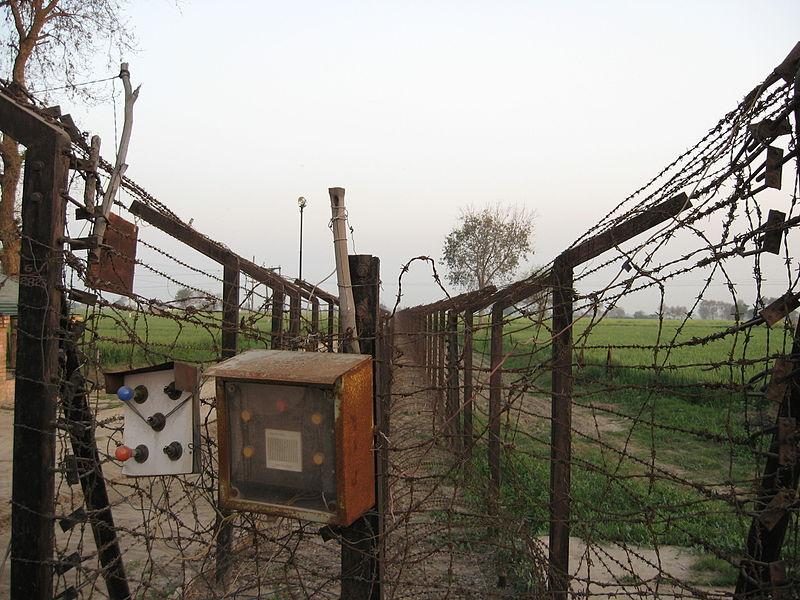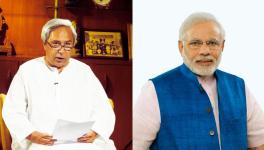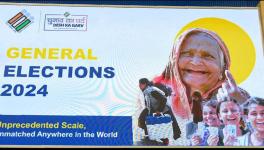Modi’s Wars: In the Light of Clausewitz’s Theory of War

Image Courtesy: Wikimedia Commons
Indian Air Force strikes at a Jaish-e-Mohammad (JeM) facility at Balakot on February brought the two countries close to an armed conflict. The Pakistan Air Force breached the Line of Control (LoC) the next day in the Poonch area. In the resulting skirmish, an Indian MiG was shot down and its pilot captured by Pakistani forces. In all likelihood, a Pakistan F16 was also downed, but Pakistan has denied it.
While Pakistan-based jihadi groups like JeM and Lashkar-e-Toiba (LeT) have been active in Indian Kashmir for nearly three decades, much publicised Indian strikes at Balakot and the so-called ‘surgical strikes’ across the LoC in 2016 are the new phenomena introduced recently. Both came about as retaliations against JeM attacks on a brigade headquarter in Uri, and on a CRPF convoy in Pulwama. These are presented as exemplifying a new strategic initiative, for which credit is being given to Prime Minister Narendra Modi. What are the implications of Modi’s wars for the long-term strategic and security concerns of India? Clausewitz’s thinking on war provides a useful framework to answer this question.
German war theorist and military commander Clausewitz is famous for his aphorism that war is continuation of politics by other means. This claim gives a rational veneer to war. In fact, his other formulation that war is a dialectical trinity of primordial hatred, the play of chance and an instrument of policy is much closer to the reality of war. Passions of hatred are the blind force that impels humans to war. Hatred breeds mistrust, so that a negotiated settlement becomes impossible. Chance plays an important role in war because multiple factors which come to a clash in it are not all known to combatants.
The resulting ‘fog of war’ is in reality the chessboard of field commanders on which they try to outsmart their opponents. The instrumental use of war to advance policy is based upon rational evaluation of its costs and benefits. The three elements are contradictory in nature. Their dialectical unity in war, as envisaged by Clausewitz, inheres in their mutual interactions and feedback loops, and they do not always gel into a ‘perfect trinity’.
The Vietnam war and the 1971 Indo-Pak war are examples from recent history in which one of the combatants was able to achieve the right combination of these elements to achieve resounding military success. History also shows that success in war is no guarantee of political success. Churchill was defeated in British elections after WWII. Within two years of her success against Pakistan in a war, Indira Gandhi’s rule in India was in dire straits.
Given the macho, 56-inch image that his followers have crafted for him, Modi perhaps would like to achieve the same level of success as Indira Gandhi in the 1971 war. However, neither the myopia of his world view, nor the realities of India’s current security scenario allow for it. As happened in the recent February 26-March 1 skirmish, his wars are likely to end up in self-promoting questionable claims, rather than celebrations of successfully achieving a definite goal.
Seeds of Hatred and Hate Factory
Modern states of India and Pakistan share an element of foundational hatred for each other. They were divided on the basis of two nations theory, suffered brutalities of Partition, and have fought four wars in the past seven decades. Indians have been lucky so far that a liberal democratic state structure provides enough political space for articulation of alternate visions to keep this hatred in check.
In fact, till the arrival of Modi as the Prime Minister, none of the earlier occupants of the office were driven by this sentiment. The two Indian Prime Ministers most open to positive engagement with Pakistan, Inder Kumar Gujral and Manmoharn Singh, had personally gone through the trauma of Partition. Both, however, had enough generosity of vision and political wisdom to not let that affect their politics.
Hindutva, the guiding philosophy and politics of Modi is a different breed. It is a mirror image of the Two Nations theory, the founding philosophy of Pakistan, except that instead of separatism, it prescribes a forcible erasure of minorities under a majoritarian programme. It remained on the periphery of Indian politics till savarna caste Hindus, who dominate the social, cultural, and economic spheres of the society, adopted it as their political common sense after convulsions of Mandal politics. Modi’s rule has galvanised an aggressive Hindu political identity, which in the name of cow and nation, has fortified anti-minority and anti-Pakistan sentiments in society. All Indians who oppose its politics are considered traitors and physically targeted. It is a pure fascist hate factory.
Given its foundational principle, and dismemberment in 1971, the ideology of the Pakistani state and its Armed forces is ingrained by hatred for its Eastern neighbour. Jihadist fundamentalism initiated by Zia ul Haq as a state policy has taken this hatred to a mass level. Economic mess and a dysfunctional state dominated by armed forces means that the country at best hops from one crisis to another. Anarchy and militarisation of society have turned it towards a dangerous path of self-destruction. The result is a lack of alternate political visions.
This does not mean that both countries do not have progressive and liberal sections who courageously stand for sanity and peace between the two countries. In some spheres like arts, their influence is unmistakable. Faiz remains the most popular poet, not only in Pakistan, but also in parts of India. However, such facts do not imply that they have influence on state policy or mass ideology. Any programme of peace in the sub-continent has to address the continuing production of hatred rooted in multiple social and political processes. On the other side, strategists need to be on guard, lest this hatred clouds their judgment. The two most common pitfalls are an underestimation of adversary’s strengths, and failure to appreciate all options actually available on the table.
Fog of War and Fakery of War Propaganda
It is necessary to separate the uncertainties in the actual conduct of war from the notion of the danger of ‘miscalculation’. The latter was used by Pakistani Prime Minister Imran Khan in one his recent addresses, and also appears in many anti-war statements. The unexpected turns in war come because both sides try to surprise their adversary. As the fog of the recent skirmish over Pulwama and Balakot settles, it is becoming clear that both sides tried to surprise the other. If Pakistan was not prepared for the deep strike at Balakot, there is some evidence that Wing Commander Abhinandan may have walked into a set trap. Leaderships of armed forces are expected to be prepared for such turns. It is part of their training.
The use of the ‘fog of war’ for propaganda and other objectives is an altogether different matter. It is clear now that the initial ‘news’ of killing of more than 300 JeM militants at Balakot, based on unnamed ‘official’ sources, was hogwash. Air Vice Marshall Kapoor in a February 28 press conference called putting any number on casualties as premature. What makes propaganda a dangerous terrain is that its manufacturers keep spreading it even after it has been proven false. Such propaganda is meant for ‘we taught them a lesson’ technique of the hate factory. In the current Indian context, it is also a tool of internal politics to drumbeat a ‘patriotic’ sentiment in coming elections.
The third element of Clausewitz’s trinity of war, a rational appreciation of its costs and advantages, cannot be easily separated from the other two. For example, hatred for the enemy also generates unverified assumptions, which strengthen the strand of the unanticipated surprises in the conduct of war. The rational basis of Modi’s war are constructed around three formulations. First is the claim that Indian policy against threat from Pakistan has been hobbled by reluctance to go for the hard option of using armed forces. Responses of the then Indian governments to Indian Airlines hijacking in 1999, attack on Indian Parliament in 2001 and Mumbai attacks in 2008 are presented as evidence of this reluctance. It is interesting that this claim about earlier Indian governments is actually of the same genus as the Hindutva argument of the self-weakness of Hindus as the cause of successes of Muslim invaders in history. The next claim is that this stance of Indian governments so far has emboldened Pakistan to undertake evermore bigger terrorist attacks. Pakistan also takes shelter behind nuclear blackmail.
The third claim is that Pakistan’s bluff can be called off and given the increasing economic strength and international standing of India, it is high time that India uses direct force against its adversary. This formulation of the character of Indo-Pak conflict is fairly widespread among Indian commentators. Followers of Modi also add the next claim that he has the right leadership qualities to take India to a decisive victory over its enemy.
There is little factual evidence to support the first claim that governments before Modi allowed Indian security to be a punching bag for Pakistani aggression. The 1971 war was calibrated for maximum effect with minimal effort. In 1984 Indian Army pre-empted Pakistan Army move in Siachen Glacier, occupied not only the whole glacier but also the entire Saltoro Ridge to the west. There are reports of Indian army units crossing the LoC in 2008, 2011 and 2013 to take revenge actions for earlier attacks by Pakistani forces. Field commanders need to be prepared for such assaults on any hot border. The 2016 surgical strikes should better be seen as escalation on an already established pattern.
According to former National Security Advisor M.K. Narayan, an attack on LeT headquarters was discussed after Mumbai attacks in 2008, but the option was dropped due to lack of special forces like the US SEALS, or Russian Spetsnaz to eliminate special targets in enemy territory. Perhaps, Indian planners then thought that only the elimination of the top leadership in a special-operation will send the required message. It needs emphasis that despite initial media brouhaha over the recent attack on an isolated facility in Balakot, there is no public clarity even after a week on what actually was destroyed.
The seminal of fault Modi’s war ‘doctrine’ is it confuses armed action against Pakistan as an end in itself, rather than as a possible means to internal peace and securing India’s borders. In Kashmir, and during the Khalistani movement in Punjab earlier, Pakistani establishment has taken advantage of a domestic political issue. Politically addressing the issue is the first requirement for internal peace. Coercive action against Pakistan can only be one part of a comprehensive counter-terrorism strategy, which too would be primarily internal. Here, the unstated assumption in the Modi model of war is that once the flow of arms and trained militants from Pakistan is stopped, the citizens of Kashmir can be bludgeoned to submission.
Rather than a singular focus on Pakistani efforts for a non-conventional war, Indian planners need to learn lessons from the 17-year war on terror unleashed by the US in Afghanistan and West Asia. Despite having a clear field for all out armed assault, the results there have at best been mixed for the sole super power in the world. The notion of calling Pakistan’s bluff misidentifies the real target. If flexible terrorist organisations like JeM and LeT are a security threat, then calling the bluff of Pakistani military establishment will have little impact on their operations. As Taliban has shown in Afghanistan, such organisations can survive and succeed without having state institutional support.
War is a continuation of politics by other means. However, when the politics of the government becomes subservient to its ideological myopia, war ceases to be a means to any national goal. According to Clausewitz’s understanding of war, the Modi model of war is determined solely by the first element of the trinity. It does not provide any rational bases for war, and feeds parasitically on the country’s armed forces to further deepen hatred in society.
Sanjay Kumar teaches Physics at St Stephen’s College, Delhi. The views are personal.
Get the latest reports & analysis with people's perspective on Protests, movements & deep analytical videos, discussions of the current affairs in your Telegram app. Subscribe to NewsClick's Telegram channel & get Real-Time updates on stories, as they get published on our website.























